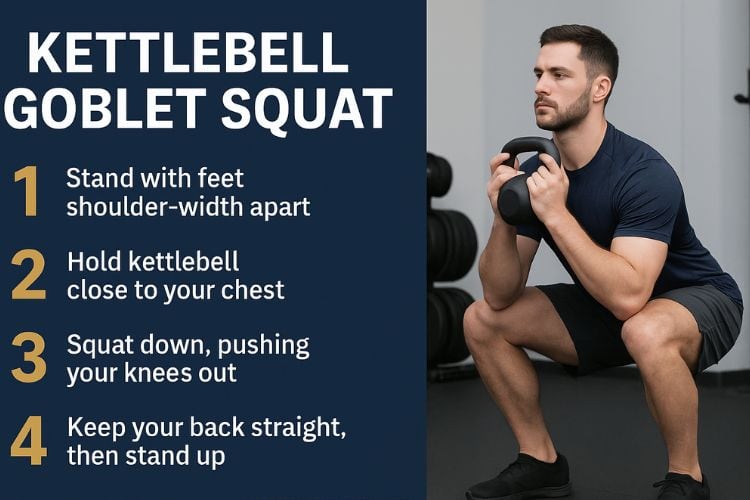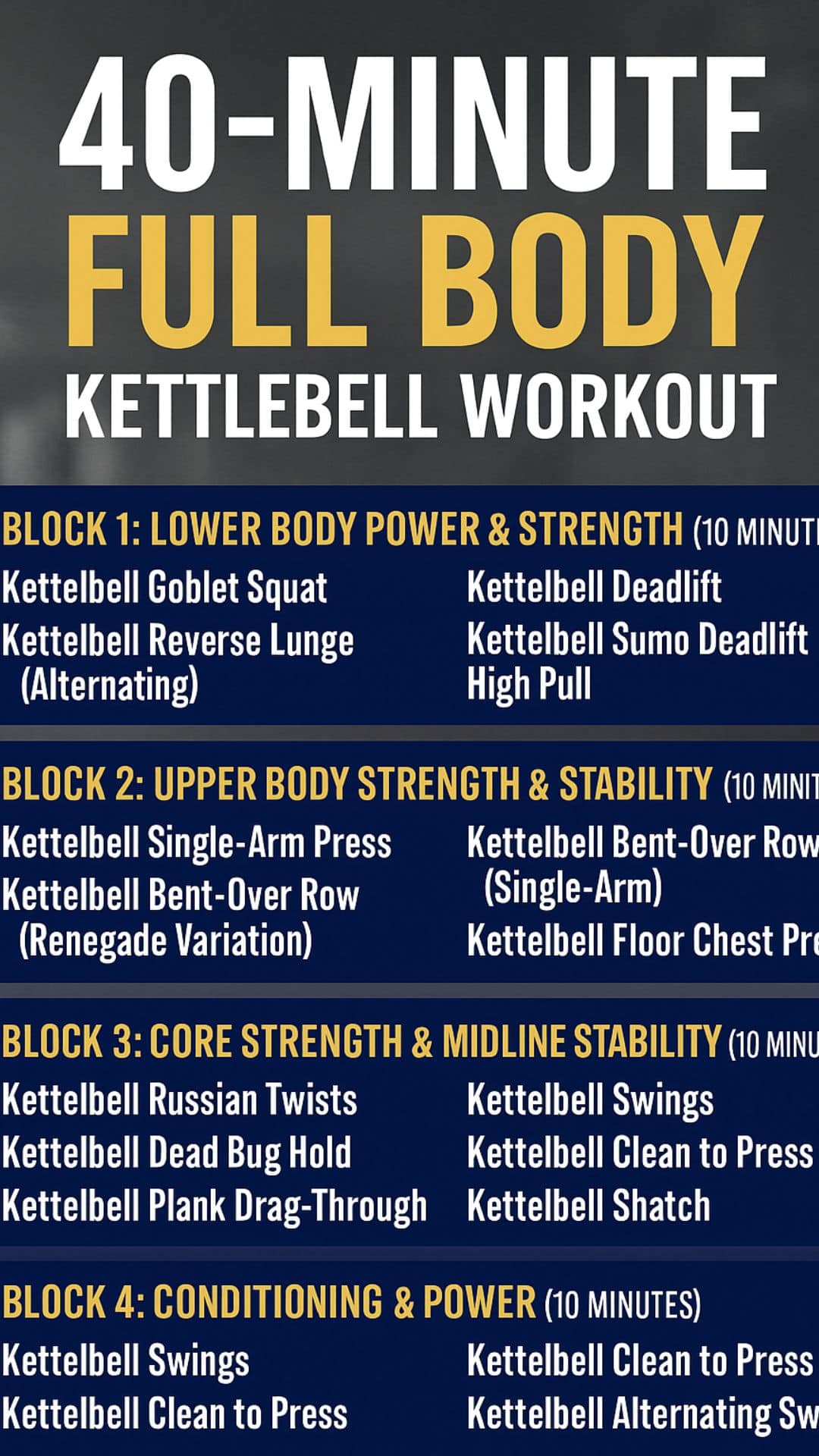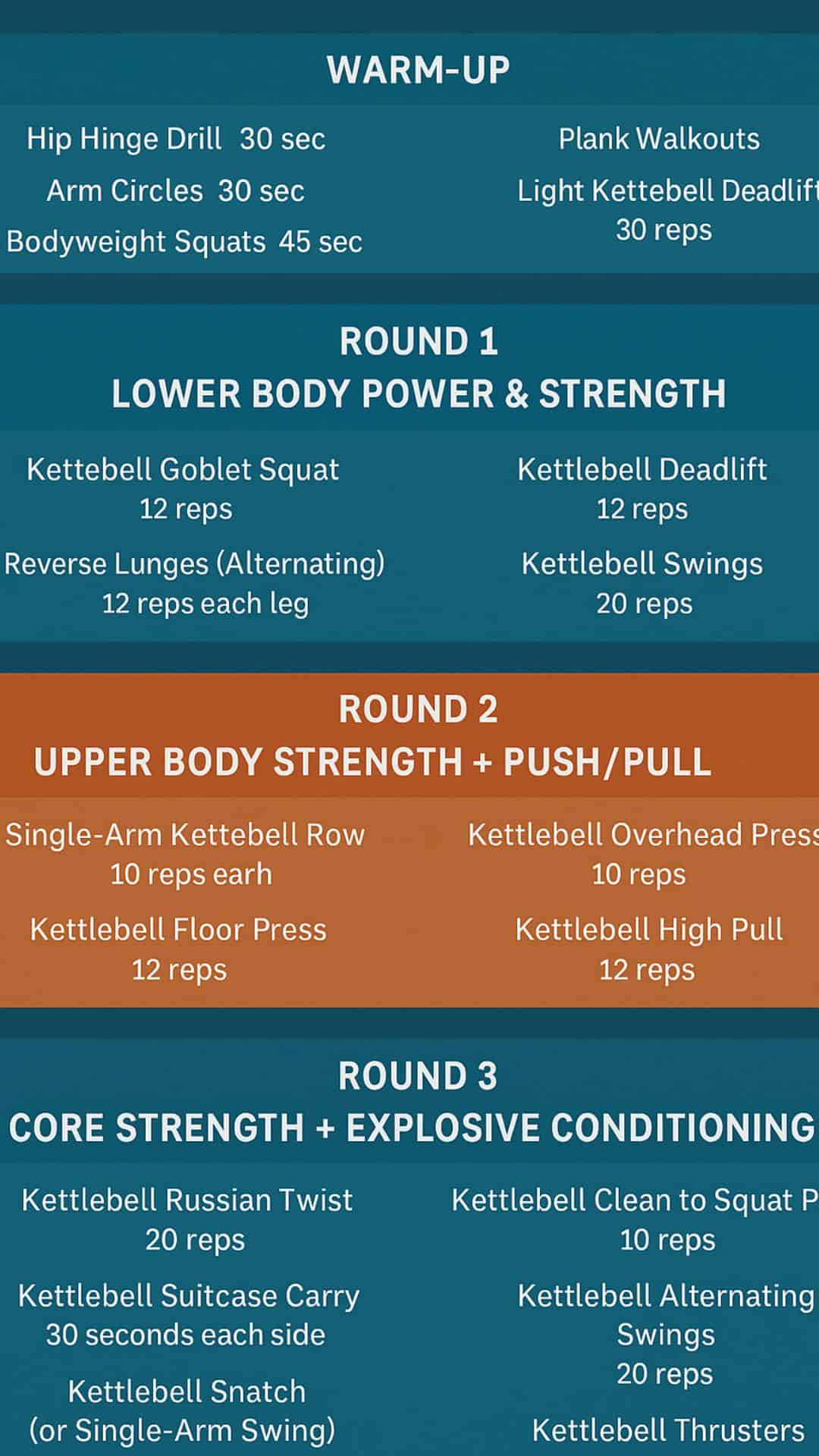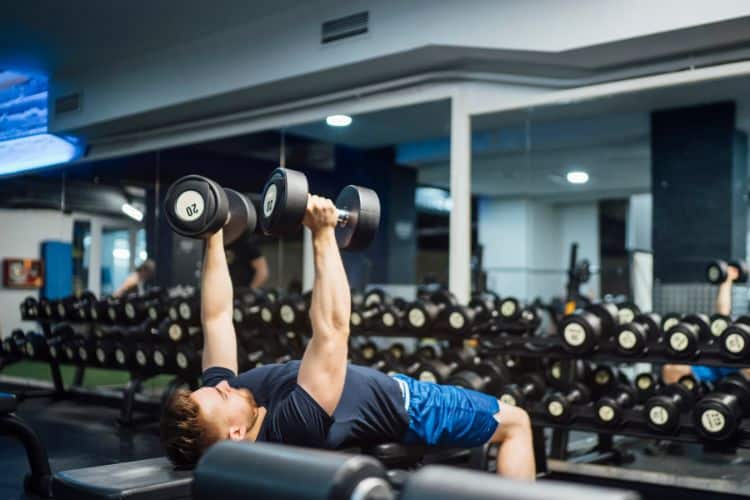
45 Minutes to Fit: A Full-Body Kettlebell Workout for All Levels

40-Minute Full-Body Kettlebell Workout (Build Muscle, Burn Fat)

30-Minute Kettlebell Workout for Total-Body Strength

25-Minute Full Body Kettlebell Workout for Strength & Fat Loss
Full Body Dumbbell Workout Plan for Beginners | Build Muscle

When it comes to starting your fitness journey, a full body dumbbell workout is one of the most effective ways to build strength, improve endurance, and develop confidence in the gym or at home. Dumbbells are versatile, beginner-friendly, and allow for progressive overload, which means you can gradually increase the weight as you get stronger. This article provides a step-by-step full body dumbbell workout plan for beginners, covering exercises, benefits, tips, and a structured weekly schedule.
Why Beginners Should Choose a Full Body Dumbbell Workout
A full body workout with dumbbells is the best starting point for new lifters because it hits every major muscle group in a single session. Unlike body part splits (chest day, leg day, etc.), beginners benefit from frequent practice of basic movements and consistent muscle activation.
Key benefits:
- Efficiency: One session works the entire body in 30–45 minutes.
- Strength foundation: Builds fundamental movement patterns—squats, presses, rows.
- Calorie burning: Engages multiple muscle groups, increasing energy expenditure.
- Flexibility: Can be performed at home or in the gym with just a pair of dumbbells.
- Progress tracking: Easy to increase load in small increments as you get stronger.
Essential Equipment for a Beginner Dumbbell Workout Plan
Before diving into the plan, here’s what you’ll need:
- Adjustable dumbbells or a light-to-moderate fixed set (5–25 lbs for most beginners).
- Flat bench or sturdy chair (optional, for presses and step-ups).
- Exercise mat for floor movements like planks or sit-ups.
- Comfortable workout attire that allows a full range of motion.
How to Structure a Beginner Dumbbell Full Body Workout
When creating a full body dumbbell workout plan for beginners, follow these training principles:
- Warm-Up (5–7 minutes)
Dynamic stretches, bodyweight squats, arm circles, light cardio (jumping jacks). - Compound Movements First
Start with multi-joint lifts like squats, presses, and rows. - Isolation Exercises Next
Target smaller muscles (biceps, shoulders, calves) after compounds. - Core Work at the End
Strengthen abs and lower back with planks, Russian twists, or sit-ups. - Cool Down (5 minutes)
Stretching and breathing exercises to enhance recovery.
Full Body Beginner Dumbbell Workout Plan (Day 1 Example)
This beginner dumbbell workout hits all major muscles in one session. Perform 2–3 sets of 10–12 reps per exercise. Rest 60–90 seconds between sets.
1. Dumbbell Goblet Squat (Legs & Glutes)
- Hold one dumbbell at chest height.
- Lower into a squat, keeping your chest up and knees aligned.
- Push through heels to return to standing.
Benefits: Builds lower body strength, improves core stability.
2. Dumbbell Bench Press (Chest & Triceps)
- Lie flat on a bench or floor, dumbbells in hand.
- Press weights upward until arms are straight.
- Lower slowly with control.
Benefits: Strengthens chest, shoulders, and arms.
3. Dumbbell One-Arm Row (Back & Biceps) Beginner Workout
- Place right knee and hand on a bench, hold dumbbell in left hand.
- Pull dumbbell toward your rib cage, keeping back straight.
- Switch sides after reps.
Benefits: Builds back thickness, improves posture.
4. Dumbbell Shoulder Press (Shoulders & Traps)
- Sit or stand with dumbbells at shoulder height.
- Press upward until arms are extended.
- Lower slowly to starting position.
Benefits: Enhances overhead strength and shoulder stability.
5. Dumbbell Bicep Curl (Arms)
- Hold dumbbells at sides, palms facing forward.
- Curl weights toward shoulders.
- Lower with control.
Benefits: Isolates biceps for arm strength and definition.
6. Dumbbell Romanian Deadlift (Hamstrings & Glutes) Beginner Workout
- Hold dumbbells in front of thighs, palms facing body.
- Hinge at hips, keeping back straight, lower dumbbells to mid-shin.
- Drive hips forward to stand tall.
Benefits: Strengthens hamstrings, glutes, and lower back.
7. Dumbbell Side Plank with Hold (Core & Obliques)
- Lie on side, hold light dumbbell at hip or overhead.
- Lift hips off ground into plank.
- Hold for 20–30 seconds each side.
Benefits: Builds core stability, reduces risk of lower back injury.
Weekly Full Body Dumbbell Workout Schedule (Beginner)
A balanced 3-day weekly schedule works best for beginners:
- Day 1: Full Body Workout A (Goblet Squat, Bench Press, Rows, Bicep Curls, Plank)
- Day 2: Rest or Active Recovery (walking, stretching, yoga)
- Day 3: Full Body Workout B (Romanian Deadlifts, Shoulder Press, Lunges, Lateral Raises, Russian Twists)
- Day 4: Rest
- Day 5: Repeat Workout A
- Day 6: Rest or light cardio
- Day 7: Rest
This ensures progressive overload, recovery, and growth while preventing injury.
Alternative Beginner Dumbbell Workout Exercises (Optional Substitutes)
To keep workouts fresh and engaging, rotate in these movements:
- Dumbbell Step-Ups (legs & balance)
- Dumbbell Chest Fly (chest stretch)
- Dumbbell Lateral Raise (shoulder isolation)
- Dumbbell Hammer Curl (biceps & forearms)
- Dumbbell Russian Twist (core rotation)
Nutrition Tips to Support a Beginner Dumbbell Workout Plan
No workout plan is complete without proper nutrition. For beginners:
- Eat enough protein: Aim for 0.8–1g per pound of bodyweight.
- Balanced meals: Include lean protein, complex carbs, and healthy fats.
- Hydration: Drink plenty of water before, during, and after workouts.
- Post-workout fuel: Combine protein + carbs (chicken with rice, or protein shake + banana).
Common Dumbbell Workout Mistakes Beginners Should Avoid
Starting a dumbbell program is exciting, but avoid these mistakes:
- Using weights that are too heavy → leads to poor form and injuries.
- Skipping warm-up/cool down → reduces performance and increases soreness.
- Training without a plan → random workouts don’t guarantee progress.
- Neglecting recovery → muscles grow during rest, not during workouts.
- Focusing only on arms → a full body plan ensures balanced development.
Progressive Overload for Beginners
To continue seeing results:
- Increase weight: Add 2–5 lbs once exercises feel easy.
- Add reps: Move from 10 reps to 12–15 before increasing weight.
- Add sets: Progress from 2 sets to 3–4 over time.
- Reduce rest times: Challenge endurance by shortening rest to 45–60 seconds.
FAQs About Beginner Dumbbell Workout Plans
Q1: How many days a week should beginners train?
3 days per week with rest days in between is optimal.
Q2: Can I build muscle with only dumbbells?
Yes. Dumbbells provide resistance and progressive overload, key to muscle growth.
Q3: How long until I see results?
Most beginners notice strength gains in 3–4 weeks, physical changes in 6–8 weeks.
Q4: Should I do cardio along with dumbbell workouts?
Yes. Add 20–30 minutes of cardio 2–3 times per week for heart health and fat loss.
Building Strength with the Best Beginner Dumbbell Workout
The best full body beginner dumbbell workout plan doesn’t need to be complicated. By sticking to compound exercises, maintaining proper form, and progressively increasing resistance, you can build muscle, burn fat, and gain confidence quickly. With just a pair of dumbbells and a structured plan, you can transform your fitness routine from day one.
Whether your goal is building strength, losing weight, or improving overall fitness, this beginner plan is the foundation you need to succeed.
Most Recommended
Subscribe to our Newsletter
Stay up to date on the latest men’s health, fitness and lifestyle trends and tips.
About Us
Men’s Fit Club was started with the goal of empowering men to get the most out of their lives. This meant going beyond exercise and diet tips to really address the broad range of issues that men face on a daily basis – topics like recreation, finding love, sexual health and even sound fashion advice.
Quick Links
© COPYRIGHT MEN'S FIT CLUB 2025. All Rights Reserved

